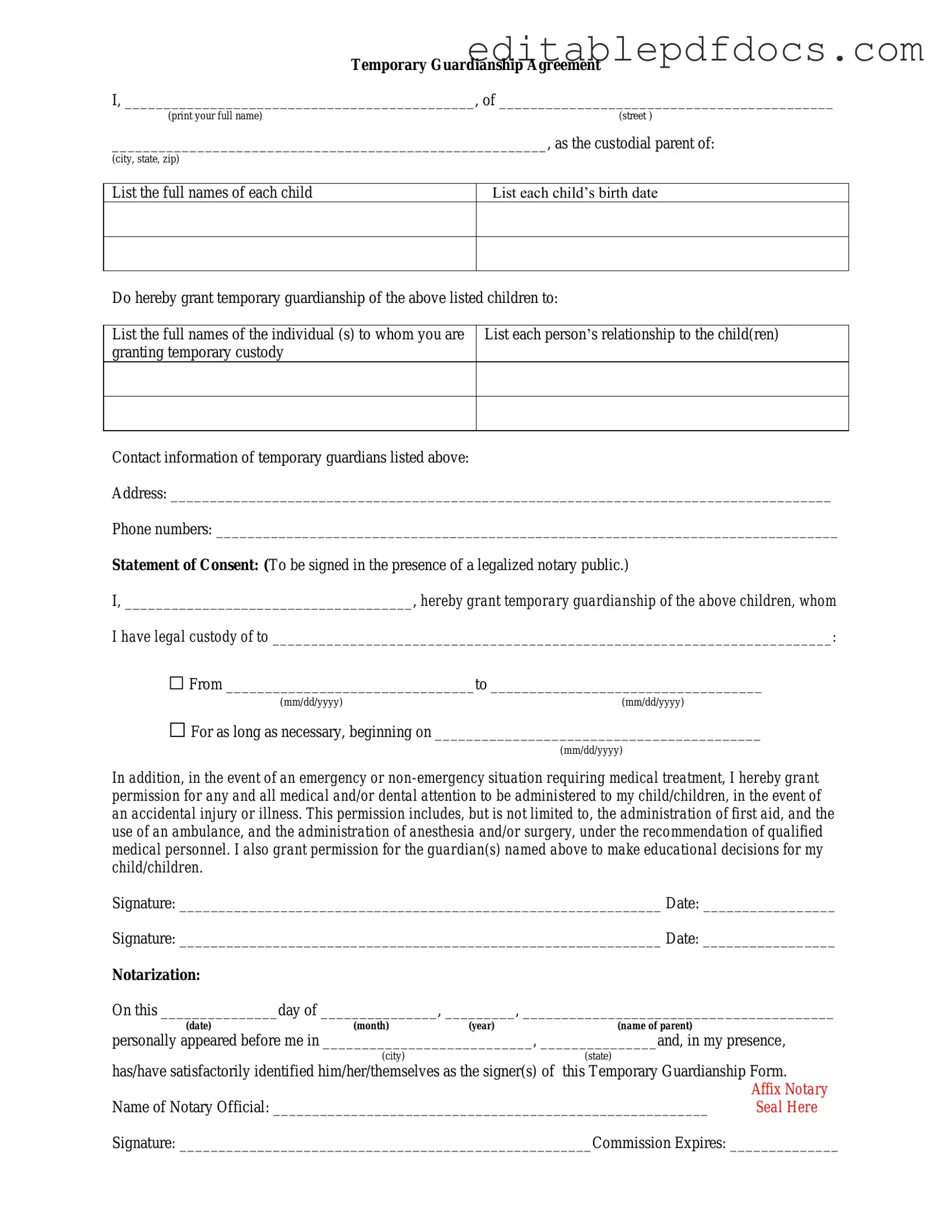Filling out the Temporary Custody form can be a straightforward process, but many people make common mistakes that can delay their case. One frequent error is not providing complete information. Every section of the form needs to be filled out accurately. Leaving out details can lead to confusion and may result in the rejection of the application.
Another mistake is failing to specify the reasons for seeking temporary custody. It's important to clearly outline why you believe temporary custody is necessary. Vague or general statements won’t help your case. Instead, provide specific examples and circumstances that justify your request.
Many individuals overlook the importance of signatures. The form must be signed by the person filing for custody. An unsigned form is incomplete and will not be processed. Make sure to double-check that all required signatures are in place before submission.
Inaccurate dates can also cause problems. Ensure that all dates related to custody arrangements, such as the start date of temporary custody, are correct. Incorrect dates can lead to misunderstandings and may affect the court's decision.
People sometimes forget to include necessary documentation. Supporting documents, such as proof of residence or financial statements, may be required. Failing to attach these documents can result in delays or a denial of the request.
Another common oversight is not keeping a copy of the completed form. It's crucial to retain a copy for your records. This can help you track your case and provide necessary information if questions arise later.
Finally, some individuals miss deadlines. Be aware of all filing deadlines related to your custody request. Late submissions can jeopardize your case and may require you to start the process over again.
